Hunting for Vintage Postcards
By Gary Leveille
Long before cell phones, e-mail, Facebook or Twitter, the penny postcard was an inexpensive, yet effective way to send brief thoughts and interesting images to friends and family.
I began collecting postcards when I was about eight years old. My grandfather gave me a pile of postcard views that he had saved, along with his childhood rocks and minerals collection. I ruined most of the postcards by thumb-tacking them onto the bulletin board in my room. And I stopped collecting rocks and minerals when I discovered waterskiing — and girls! I never stopped collecting postcards.
Despite ever-changing tastes in the antiques and collectibles field, deltiology, the official name for postcard collecting, has remained consistently popular for over one hundred years. Collectors search out a wide range of subjects and topics: everything from “small-town America” to Halloween scenes. Scholars as well as amateur local historians study these images to get a clearer understanding of the past. Postcard images of old buildings, streetscapes, people, holidays, wars, celebrations and transportation offer important clues to bygone days.
With the development of Internet auction sites like eBay, more and more “newbies” are selling and collecting postcards. Erroneous information is sometimes given which results in disappointment and frustration. Following is brief primer for anyone interested in the postcard field.
Almost everyone on this planet knows that a postcard is a rectangular piece of thin cardboard intended for writing and mailing without an envelope, and at a lower rate than a letter. Until the postcard concept was developed in the middle of the 19th century, people mailed messages to each other via the privacy of sealed letters. Several countries claim creation of the postcard, but it was apparently the Austrian government that issued the first postal card in 1869.
It took some time before U.S. postal officials considered the use of postcards. First, several artistic entrepreneurs began printing pictures on mailing envelopes. They featured comic illustrations, holiday sentiments, and more. During the U.S. Civil War, patriotic and pro-union pictures appeared with frequency on envelopes.
Some sources state that in the 1860s, the United States government issued a copyright (a patent was also applied for) on a private mailing card design. “Lipman’s Postal Cards” were for sale here by the early 1870s. Although privacy was initially a concern, the use of postcards caught on, in part, because of the economic benefits enjoyed by mailing a message for less postage than the normal letter rate. The United States Post Office Department issued its own postal cards in 1873. The indicia on those watermarked cards depict the bust of Liberty and the inscription “U S Postage One Cent” in an oval.
Postcards prior to 1898 are generally grouped into a category known as the “Pioneer Era.” In the U. S. these early postal cards were used primarily for sending brief advertising and information, generally from larger cities. Only U.S. Post Office-issued cards were allowed to use the word “Postcard” on the back of the postcard. They also feature busts of president Ulysses S. Grant or Thomas Jefferson. Privately published postcards of this era were often imprinted with the terms “Souvenir Card,” “Mail Card,” or “Correspondence Card.” Many postal historians believe that the use of postcards in the United States took a big leap forward when they were offered for sale at Chicago’s Columbian Exposition (World’s Fair) held in1893.
Private Mailing Card Era (1898-1901)
In 1898, Congress ruled that privately printed mailing cards could be sent at the same one-cent rate as the penny postcards issued by the post office. Only the address was allowed on the stamp side (now referred to as “undivided back”). Space was left around the image for a brief message from the sender. The “Private Mailing Card” imprint can be found in several styles.
Late in December of 1901, the U.S. Government allowed private postcard manufacturers to print the words “Post Card” on the “undivided back” (address) side of the card. Notes and messages were still not permitted on the address side. Early real photo postcards (to be discussed later) by local amateurs as well as professional photographers began to be developed and sent. But the vast majority of postcards were imported by U.S. companies from German publishers who possessed the newest lithographic technology for printing postcards in color, and a talented workforce for producing hand-colored cards. According to some sources, by 1907, European publishers accounted for over 75% of all postcards sold in the U.S.
Divided Back / Golden Age Era (1907-1915)
Postcards with a “divided back” were issued in 1907. Space for the address was provided on the right side of the back of the postcard while the left side was reserved for personal messages. This meant that the entire front of the postcard could now feature an image. It was during this time that the use of postcards became a world-wide “addiction” with publishers printing hundreds-of-millions of postcards. U.S. souvenir importers sent salesmen to virtually every sizeable town in the U.S. to gather images of buildings and streets. The camera negatives were then sent— mostly to Germany—where the largest postcard producers were located. Great Britain also owned a share of the postcard market.
The postcard craze was temporarily halted with the onset of World War I, which ended the supply of postcards from Germany. U.S. postcard makers offered poorer quality postcards, but an influenza epidemic and war paper shortages also slowed the postcard hobby.
Looking for ways to shrink costs, postcard manufacturers began placing a white border around each image. This reduced the image size and saved money on ink. The white margin also allowed for some leeway and slippage when the large press sheets were placed into the paper cutters. Even if the paper shifted slightly during the postcard cutting, the white margin would take the misaligned cut, and the actual image would not be chopped off.
Real Photo Postcards
Even as large scale printing of postcards declined for a time, custom-made “real photo” postcard production increased. Real photo cards were produced in black and white (later aging to a warm sepia tone). Back about 1906, the Eastman Kodak Company began making cameras that produced negatives suitable for postcard size. They also made heavier postcard stock photographic paper. Cards could be produced in smaller volumes for the home hobbyist or for small-town store sales. Because real photo cards were generally not mass-produced, the views are often unique, rarer, and command greater interest (and dollars) today. These views are sometimes reproduced, but skilled collectors can usually determine an unmailed original from a repro by the custom stamp boxes (on which to place the stamp) usually found on the back of the card. There were a variety of interesting stamp boxes printed, but that is a subject for another article.
One of the larger producers of fine real photo postcards throughout the northeast and beyond was the Eastern Illustrating and Publishing Company of Belfast, Maine. This company hired skilled photographers who traveled from town to town, capturing incredible views that are highly-sought after today. Numerous other smaller companies and local photographers also made real photo postcards. Carrie Smith Lorraine of Sheffield, MA was a talented woman photographer who created real photo postcards featuring a variety of interesting subjects. Most of her views were not signed, but did feature a “Souvenir of Sheffield, Mass.” imprint on the back of her postcards.
Cyanotype postcards are a sub-category of real photo cards which are highly sought-after for their rarity. Different developing chemicals were used which produced cyan-blue prints.
Sometimes “newbie” postcard collectors and sellers incorrectly identify a printed postcard as a real photo card. (More about this later.)
During this time, postcard publishers began printing cards on a “linen” paper stock that gave postcards a textured look and feel. This type of paper allowed the use of cheaper, bright dyes for image coloring, and the postcards were produced and sold at a cost-savings. Linen views proved to be popular with roadside establishments looking for cheap advertising. Tourist traps, motels and roadside attractions were often featured on linen cards, but they quickly became a low-cost postcard sold in big cities and small towns throughout the U.S. In recent years, the collecting of linen cards has increased significantly as new collectors find beauty in the bright designs.
Photochrome Era (1939 to present)
A new technology known as Photochrome printing made it possible to produce large volumes of postcards with superior photo quality and color. Postcards printed in this manner quickly became known as “chrome cards.” To save money, black and white chrome cards were produced by companies like Dexter Press. These cards appear to the untrained eye to be real photo cards. Newbie sellers on eBay often describe these views (and even earlier printed cards) as real photo postcards. Wrong! There is an easy way to tell. Hold the image up to a magnifying glass. If you see a tiny dot pattern, the card was mass-printed, and not a real photo.
In the 1970s, flexible postal regulations allowed postcard makers to expand the standard postcard from 31⁄2” x 51⁄2” size to “4” x 6.” Named “continental cards,” these larger postcards allow more room for messages and larger, eye-catching images. Most modern-day postcards are offered in the larger size. As time goes on, there will be more and more collectors of continental postcards. Most of these views may be acquired at a low cost.
Gary Leveille is an editor, author and historian who lives in Great Barrington, MA. He has been collecting, buying and selling postcards since he was a child.
Hundreds of Categories
There are numerous postcard topics — far more than can be listed and described here. Following are just a few of the hundreds of categories sought after by collectors:
Advertising, Animals, Artist-signed, Comic, Copper Window, Embossed, Ethnic, Exaggeration, Glitter, Hold-to-Light, Holidays, Leather, Military, Political, Railroad, Risqué, Roadside, Ships, Small-town America, Sports, Topical, Tourist Attractions, Trolleys, Wooden, World’s Fair, Zeppelin.
There are exceptions to every rule, but postcard condition is of paramount importance to collectors. A postcard with bends, wear and tear is worth far less than the same postcard in good condition. Sometimes unwitting/uneducated sellers damage good postcards when attempting to remove those “valuable” (not!) one-cent stamps from the back of old cards. In my 40 years of collecting, I have rarely found a valuable stamp on the back of a postcard. Most have no value.
However, folks should pay attention to postal cancellations! Often rare postal cancellations from defunct small town post offices may be found, along with a myriad of other interesting postal cancellations and marks. A rare cancellation may significantly boost the value of an otherwise common postcard view.
#antiques #auctions #collections #postcards #socialmedia #socialize #family #friends

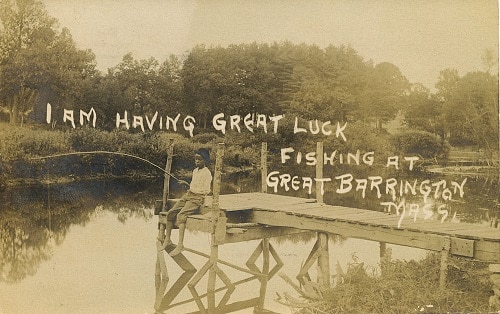
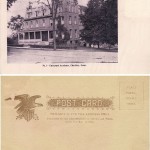
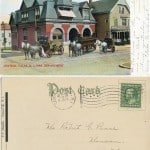
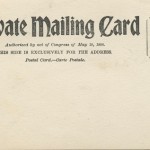
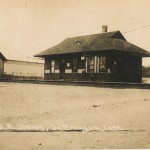

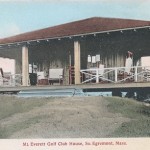
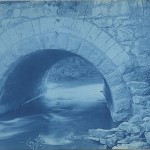
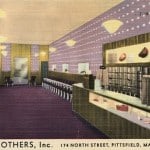
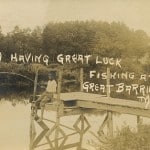

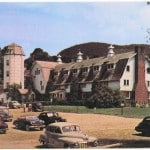



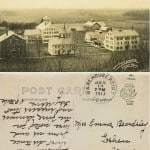




Related posts: